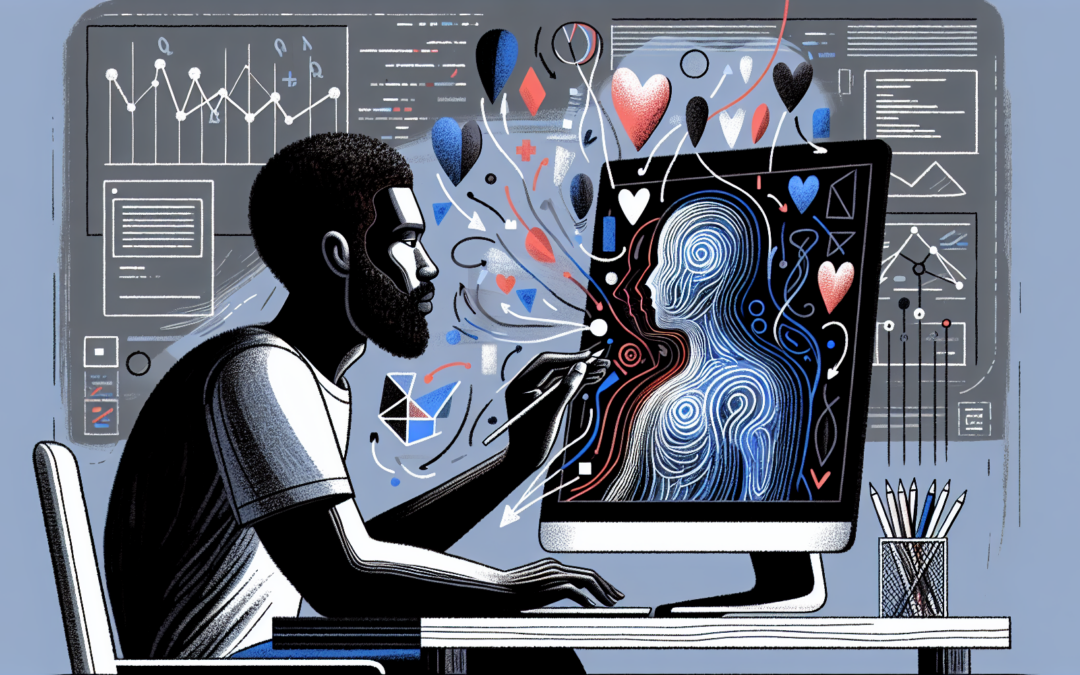Web Design is more than just visual appeal; it’s the art of creating a digital space that resonates deeply with its audience. Imagine a virtual environment that doesn’t simply present information but sparks emotion, nurturing a lasting connection between viewer and brand. As we navigate through the layers of colors, typography, and user experience, we delve into the essence of stories told without words, where every click is an emotion and every scroll is an invitation. At RP Summit, we explore how thoughtful web design transforms fleeting interactions into enduring digital relationships.
Exploring the Art of Web Design: Crafting Emotional Connection
In the realm of web design, it is evident that aesthetics alone are insufficient to cultivate an impactful user experience. While visual allure can draw users in, creating sites that invoke genuine emotion demands foresight, empathy, and innovation. It’s about intertwining functionality with storytelling in a way that engages, enlightens, and evokes emotion in an increasingly digital world. How then can we, as web designers, deepen this experience and build intuitive digital connections?
Embrace User-Centric Design
User-centric design places users at the forefront of every creative decision, fostering designs that are relatable and accessible. A poignant example is empathetic navigation. Anticipating needs and simplifying pathways enables a smoother user journey, enhancing satisfaction and engagement. This attentiveness to user experience ensures the site feels personal, aligning the service delivered with the user’s expectations.
Building Stories Through Imagery
Visual storytelling is more powerful than ever in the digital age. Through careful image selection, designers capture subtleties and convey narratives that words cannot. Whether it’s a vivid landscape, a soft gradient color scheme, or poignant photorealism, images have the capability to transcend cultural and linguistic barriers. They connect users on a visceral, emotive level, creating shared experiences that inspire trust and empathy.
Harmonizing Typography and Content
Typography isn’t just a means to display content; it’s integral to how the message is perceived. The delicate balance of typographical hierarchy communicates important information instantly. By choosing fonts and styles that align with the brand’s message and values, web design can impact readability and tone. Combined with compelling content, this synergy not only retains viewers but invites them to explore further. For a deep dive into how effective typography impacts user engagement, see RP Summit’s post on Typography Basics: Choosing the Right Fonts.
Seamless Interactivity and Minimalism
For modern websites, less can indeed be more. Interactive elements, when executed with intention and purpose, can engage users without overwhelming them. Minimalist design doctrines encourage the elimination of unnecessary clutter, ensuring attention remains where it is needed. Intuitive animations and hover effects can highlight important elements, guiding users gently through the site. This artful balance between simplicity and functionality not only boosts user engagement but can significantly enhance load speeds and performance.
Responsiveness Across Devices
Today’s audiences access content across a plethora of devices—each boasting different sizes, shapes, and interfaces. For emotional impact, sites must hold their essence regardless of screen size. Creating responsive designs involves tailoring layouts and elements so they adapt seamlessly to desktop, tablet, and mobile platforms. This consistency promises integrity and fosters trust, showing users that their experience is a priority, no matter how or where it’s accessed.
Harnessing the Power of Color Psychology
The strategic use of color can stir profound emotional responses. Captivating palettes evoke moods, guiding perceptions and reactions as users navigate through a site. The subtle implication of a calming blue or a passionate red can influence decision-making, drive calls to action, and distinguish a brand identity. By wielding color psychology, designers can align audiences with the intended ethos and emotional intent of a brand. For more insights on how color enhances brand perception, explore our Color Theory: Designing for Impact article.
Collaboration with Content Creation
The marriage of web design and content creation shapes not only aesthetic appeals but defines distinct experiences. Encouraging synergy between designers and content creators transforms static interfaces into celebratory experiences of cohesive sense and purpose. The cadence created through understanding and cooperation between these domains provides an enriched, engaging journey for users.
Engaging Without Borders: Social Integration
Incorporating social media elements into web design extends emotional resonance beyond the site’s bounds, fostering community and continuous engagement. Interactive social feeds, shareability features, and links to profiles can drive cross-platform brand conversations. Aligning these social touchpoints with site goals enhances both organic reach and authenticity. Stay connected and join the conversation with RP Summit on Instagram, Facebook, and Twitter.
Conclusion
The emotive web, while an emerging concept, amplifies the possibilities of connectivity in our digital age. As designers, nurturing this potential is both an opportunity and responsibility. Through empathy, creativity, and strategic decision-making, web design can transcend its conventional function to stimulate relationships, dialogues, and unforgettable experiences. Together, let’s explore the art of web design that not only prioritizes aesthetic appeal but also seeks to evoke genuine sentiments, ensuring that every interaction leaves an indelible mark on its audience. Engage with us on this journey at RP Summit, where connection and creativity converge.

